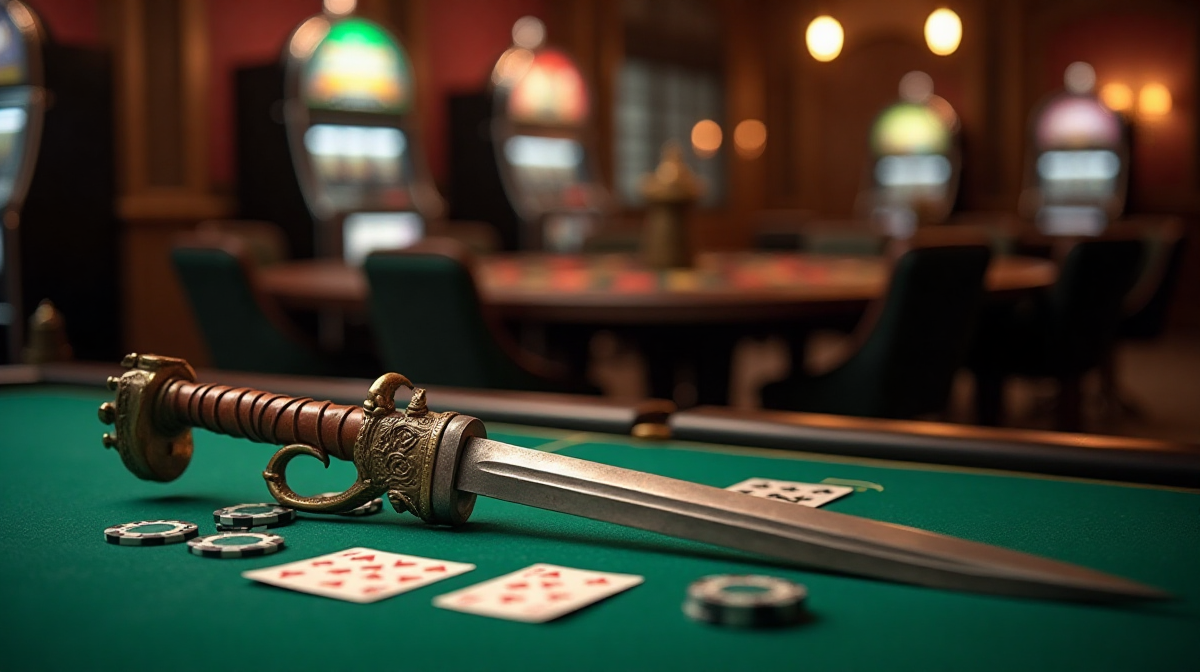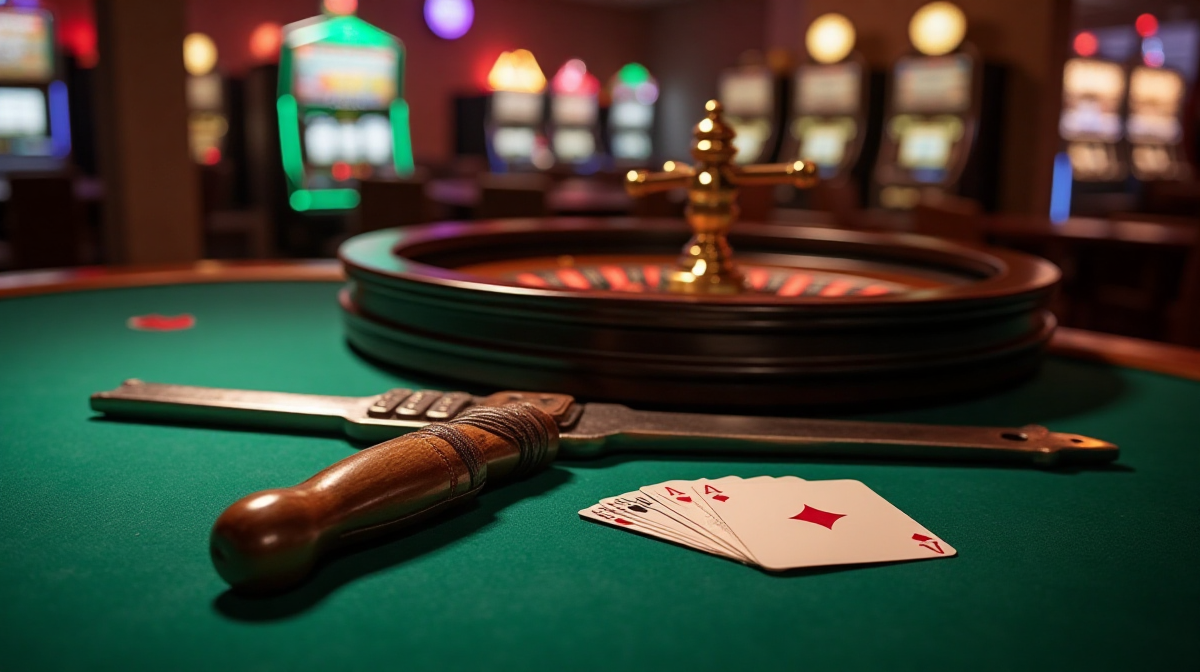Blackjack Weapon: Myth or Reality?
The Intriguing History & Lore of the Blackjack
The blackjack, a seemingly simple weapon, carries with it a history steeped in both practical application and dramatic lore. Often depicted in fiction as a silent, deadly tool, the reality of the blackjack is far more nuanced. From its origins as a readily available self-defense item to its role in law enforcement and its eventual decline, the blackjack’s story is a fascinating glimpse into the evolution of personal protection. Interestingly, even today, discussions around risk and prediction can be found in various online communities, even relating to platforms like betfuse where users seek information.
Defining the Blackjack: What Exactly Is This Weapon?
At its core, a blackjack is a simple, weighted club. Traditionally, it consists of a short handle, often made of wood or metal, with a weighted head covered in leather. This weight concentrates the force of a swing, maximizing its impact. While designs varied, the goal remained consistent: a compact, concealable weapon capable of delivering a disabling blow. Understanding its basic construction is crucial when evaluating the claims surrounding its effectiveness, especially when considering the need for accurate betfuse prediction today game.
Overview of Article Scope: Separating Fact from Fiction
This article aims to dissect the myths and realities surrounding the blackjack. We will explore its historical usage, the origin of the “silent killer” legend, its modern-day legality, and compare it to other impact weapons. We will examine the skill and anatomical knowledge required to inflict serious injury, and ultimately, assess whether the blackjack remains a relevant weapon in the 21st century. Successfully predicting outcomes, whether in a historical context or even on a platform like betfuse prediction site, demands a clear understanding of underlying factors.
Historical Usage of the Blackjack
Ancient Origins: Early Forms & Purposes
The concept of a weighted impact weapon dates back centuries. Early forms, often simple clubs weighted with stone or metal, were used for hunting and self-defense long before the blackjack as we know it emerged. These early tools demonstrate a fundamental human desire for a readily available means of protection.
19th & Early 20th Century: Prevalence in Law Enforcement & Civilian Defense
The blackjack gained significant popularity in the 19th and early 20th centuries, becoming a standard tool for law enforcement and a common item for civilian self-defense.
Role in Policing – A Non-Lethal Option
Police forces embraced the blackjack as a non-lethal method of subduing suspects. It offered a way to incapacitate individuals without resorting to firearms, reducing the risk of fatalities. This was particularly valuable in crowded urban environments.
Civilian Carry & Self-Defense Practices
Civilians, particularly those traveling alone or working in potentially dangerous professions, also carried blackjacks for self-defense. Its compact size made it easily concealable, providing a discreet means of protection. It's a far cry from the strategic thinking involved in blackjack 21, but the core principle of calculated risk remains.
Wartime Applications: Limited but Documented Use
While not a primary weapon of war, the blackjack saw limited use by military personnel, particularly in close-quarters combat and for guard duty. Its silent nature was an advantage in certain situations.
Decline in Popularity: Reasons for the Shift
Several factors contributed to the decline in the blackjack’s popularity, including the development of more effective non-lethal weapons (like pepper spray), changing law enforcement tactics, and increasing legal restrictions.
The “Blackjack as a Silent Killer” Myth
Examining the Legend: Where Did the Myth Originate?
The myth of the blackjack as a “silent killer” likely arose from sensationalized accounts in pulp fiction and media portrayals. Stories often depicted skilled users delivering a single, precise blow that could instantly incapacitate or even kill an opponent.
Anatomical Vulnerabilities & Potential for Serious Injury
While a blackjack can inflict serious injury, it requires a precise strike to vulnerable areas.
Skull Fracture – Possibilities & Likelihood
A direct hit to the skull with sufficient force could cause a fracture. However, achieving this requires significant skill and is not guaranteed.
Concussion & Brain Damage – Risks Involved
A blow to the head, even without a skull fracture, can cause a concussion or more severe brain damage. The severity depends on the force of the impact and the location of the strike.
The Skill Required to Inflict Significant Damage: It’s Not as Easy as Portrayed
Successfully delivering a disabling blow with a blackjack requires extensive training and practice. It is not simply a matter of swinging the weapon; proper grip, stance, target selection, and timing are all crucial. It's a level of precision not unlike attempting a successful strategy when playing blackjack 21.
Disproving Exaggerated Claims – Case Studies/Historical Analysis
Historical records and case studies reveal that instances of fatalities directly attributed to blackjack attacks are relatively rare. Most injuries sustained from blackjack attacks are contusions, lacerations, and fractures – serious, but not necessarily life-threatening.

Modern-Day Legality & Regulations
Variations in Laws Across Different Jurisdictions
The legality of owning and carrying a blackjack varies significantly depending on location. Some jurisdictions outright prohibit them, while others allow them with restrictions.
Consideration as a “Prohibited Weapon” – Defining Characteristics
Many laws define blackjacks as “prohibited weapons” due to their potential for causing serious harm. Factors considered include the weapon’s construction, weight, and intended use.
Legal Implications of Carrying a Blackjack Today
Carrying an illegal blackjack can result in hefty fines, imprisonment, and a criminal record. It is crucial to understand the laws in your specific jurisdiction before possessing or carrying one.
Self-Defense Laws & Use of Force Continuum Considerations
Even in jurisdictions where blackjacks are legal, their use in self-defense is subject to the use of force continuum. The level of force used must be proportionate to the threat faced.
Blackjack vs. Other Impact Weapons
Comparing Blackjack to Billy Clubs, Nightsticks & Saps
While all are impact weapons, there are key differences.
Differences in Design & Materials
Billy clubs and nightsticks are typically longer and more rigid than blackjacks, while saps are often made of leather and contain a weighted core.
Variations in Legal Definitions
Legal definitions of these weapons can also vary, impacting their legality.
The Role of Concealability: Why Was the Blackjack Preferred?
The blackjack’s compact size and concealability were major advantages, particularly for civilians who wanted a discreet means of self-defense.
Effectiveness Comparison: Strengths and Weaknesses of Each Weapon
Billy clubs and nightsticks offer greater reach and striking power, while saps are more easily concealed but deliver less force. The blackjack offers a balance between these characteristics.
Training & Techniques
Historical Training Methods: Law Enforcement & Specialized Units
Historically, law enforcement officers received extensive training in the proper use of the blackjack, focusing on target areas and effective striking techniques.
Grip, Stance & Target Areas –
Proper grip, stance, and target selection are essential for maximizing the effectiveness of a blackjack. (Disclaimer: This information is for historical and informational purposes only. Attempting to use this information could result in serious injury or legal consequences.)
Modern Self-Defense Considerations
Modern self-defense training emphasizes situational awareness, de-escalation tactics, and the use of less-lethal options. (Disclaimer: This article does not endorse the use of the blackjack for self-defense. Seek professional training from a qualified instructor before considering any self-defense tool.) The best approach, like predicting results on a betfuse prediction site, involves careful analysis and informed decisions.
Ethical Considerations & Responsible Weapon Handling
Regardless of legality, responsible weapon handling is paramount. This includes safe storage, responsible use, and a thorough understanding of the legal and ethical implications of using force.

Conclusion
Recap of Key Findings: Myth vs. Reality
The blackjack’s reputation as a “silent killer” is largely a myth. While capable of inflicting serious injury, it requires significant skill and precision to do so effectively. Its historical usage demonstrates its role as a non-lethal option for law enforcement and a common tool for civilian self-defense.
The Enduring Legacy of the Blackjack – Its Place in History and Pop Culture
Despite its decline in popularity, the blackjack remains a fascinating artifact of the past. It continues to appear in fiction and historical accounts, solidifying its place in popular culture.
Final Thoughts: Is the Blackjack a Relevant Weapon in Today's World?
In today’s world, with the availability of more effective and legally permissible self-defense tools, the blackjack’s relevance is questionable. However, its historical significance and enduring mystique ensure that it will continue to be a subject of fascination and debate. Even finding reliable information, such as a trustworthy betfuse review, requires discerning fact from fiction, much like understanding the true story of the blackjack.

